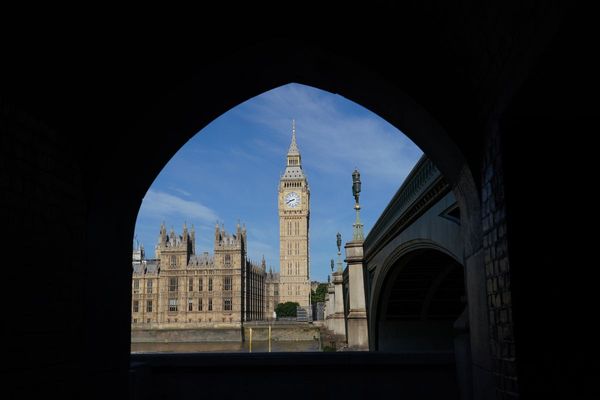
David Harvey has become adept at masking the disabling tremor in his hands, using exaggerated gestures in conversation and using two hands when doing even the smallest task like drinking a cup of water.
"It's something that I try and hide a little bit," the 68-year-old retiree told 7.30.
"It's anything you do with your hands, all sorts of things that you take for granted. I have to concentrate on what I'm doing."
For other, more complex tasks, he must rely on his wife Dawn.
"I definitely think it's gotten worse in the last two years. He avoids doing things. I tend to take over to save him the embarrassment of spilling something," she said.
David is among the one in five people over retirement age who have uncontrollable tremors that typically get worse with time.
Essential tremor can cause 'significant disability'
One of the most common neurological conditions, essential tremor is a progressive shaking of the limbs and can rob a person's daily independence, according to neurosurgeon Dr Ben Jonker at St Vincent's Hospital in Sydney.
"People tend to think about Parkinson's disease when they see a tremor, but the more common condition is called essential tremor and there's a related condition called dystonic tremor," Dr Jonker told 7.30.
"And those conditions can cause significant disability: eating, drinking, brushing your teeth, shaving etc."
Until now, medication has only been successful in treating half of patients. Hours of imperfect and invasive deep brain surgery comes with risks and a long recovery.
Now Mr Harvey will be one of the first patents to undergo breakthrough surgery at St Vincent's Hospital, in which he will stay awake while a team of specialists, including Dr Jonker, will operate on his brain without a single incision.
First time technology is being used in Australia
MRI-guided focused ultrasound will allow doctors to see inside his awake brain, while high-frequency sound waves create a strategic lesion, according to neuroradiologist Dr Yael Barnett.
"Essentially what we're doing is deliberately creating a lesion in a specific part of the brain that we think is responsible for the tremor," Dr Barnett told 7.30.
"So by creating that lesion we're interrupting an abnormal electrical circuit that's causing the tremor."
The technology has emerged in some of the world's best hospitals and clinics, but it is the first time it is being used in Australia.
Mr Harvey is only the fifth patient to undergo the treatment in the southern hemisphere.
"This [has an] immediate effect and the very cool thing about it from my perspective is we can monitor the patient throughout the treatment and we can adjust things and titrate things to actually treat the tremor there and then," Dr Jonker said.
"And they can walk away from it knowing that we've done the job, rather than having to wait and see is it's going to work."
Neurologist Dr Stephen Tisch ensures the ultrasound waves are hitting the correct spot by instructing Mr Harvey to draw snail-like spirals.
They begin child-like and scratchy due to Mr Harvey's tremor and slowly improve as the ultrasound waves get closer to their target.
"It's a real-word test of what his handwriting is and as the spiral improves, it should be translated into lots of other improvements like eating and drinking," Dr Tisch said.
'No cuts, think of that'
After a matter of minutes, without sedation or incision, Mr Harvey emerges from the MRI suite with his tremor all but gone.
"It's groundbreaking and just to think there are so many opportunities for people now to undergo this sort of procedure without it being invasive," he said.
"In other words, no cuts, you think of that — brain surgery without surgery."
Mr Harvey said the procedure cost him around $30,000 because it is not yet subsidised by Government.
Dr Jonker said MRI-guided focused ultrasound is a technology platform which promises to treat other neurological conditions like Parkinson's disease.
"In a lot of countries it's now becoming much more widely available due to public funding or at least subsidisation of treatment costs, and we're hoping the same thing will happen here overtime," he said.
The National Health and Technology Reference Group is currently reviewing the technology.







